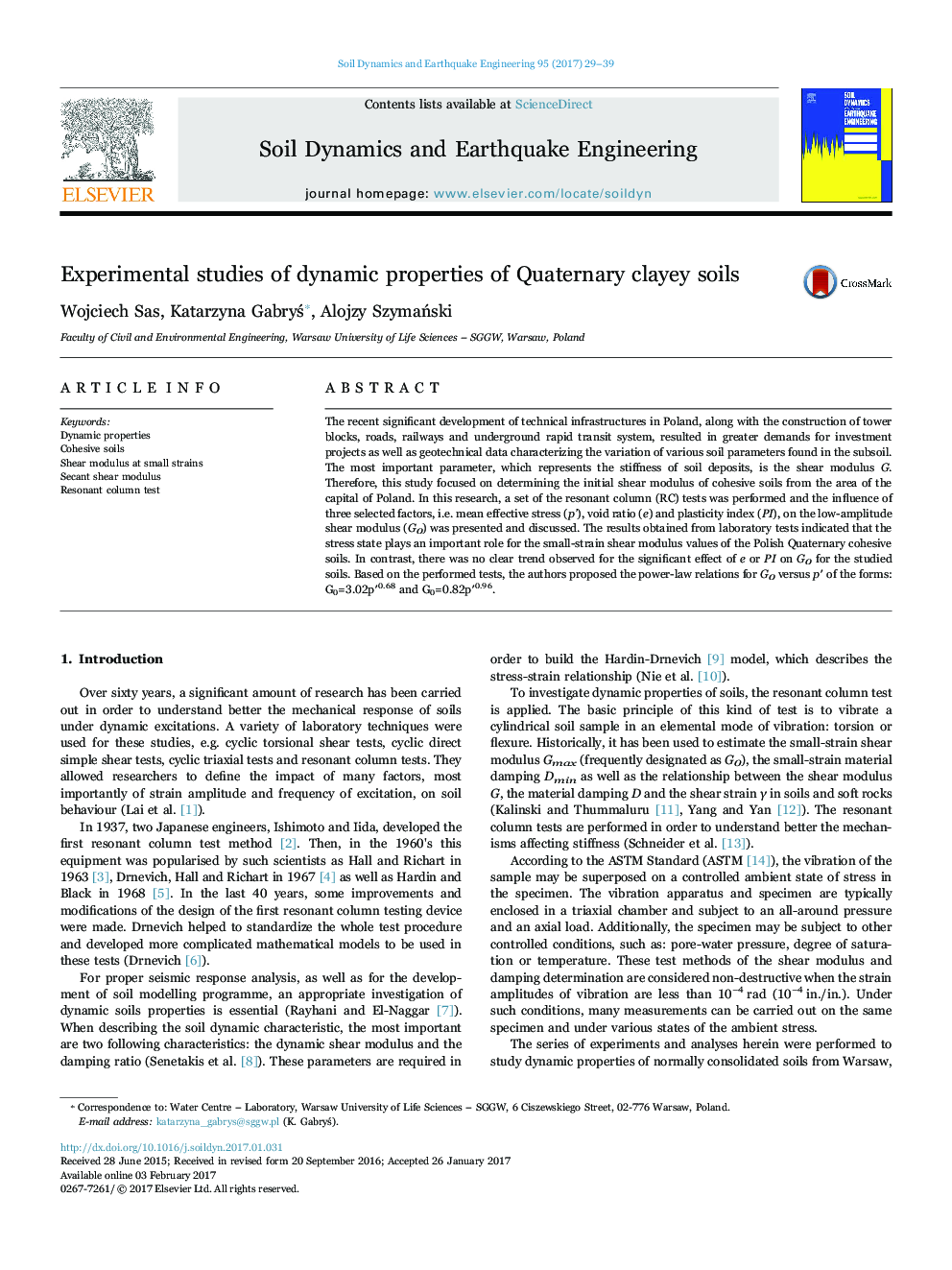| Article ID | Journal | Published Year | Pages | File Type |
|---|---|---|---|---|
| 4927320 | Soil Dynamics and Earthquake Engineering | 2017 | 11 Pages |
Abstract
The recent significant development of technical infrastructures in Poland, along with the construction of tower blocks, roads, railways and underground rapid transit system, resulted in greater demands for investment projects as well as geotechnical data characterizing the variation of various soil parameters found in the subsoil. The most important parameter, which represents the stiffness of soil deposits, is the shear modulus G. Therefore, this study focused on determining the initial shear modulus of cohesive soils from the area of the capital of Poland. In this research, a set of the resonant column (RC) tests was performed and the influence of three selected factors, i.e. mean effective stress (p'), void ratio (e) and plasticity index (PI), on the low-amplitude shear modulus (G0) was presented and discussed. The results obtained from laboratory tests indicated that the stress state plays an important role for the small-strain shear modulus values of the Polish Quaternary cohesive soils. In contrast, there was no clear trend observed for the significant effect of e or PI on G0 for the studied soils. Based on the performed tests, the authors proposed the power-law relations for G0 versus pâ² of the forms: G0=3.02pâ²0.68 and G0=0.82pâ²0.96.
Related Topics
Physical Sciences and Engineering
Earth and Planetary Sciences
Geotechnical Engineering and Engineering Geology
Authors
Wojciech Sas, Katarzyna GabryÅ, Alojzy SzymaÅski,
